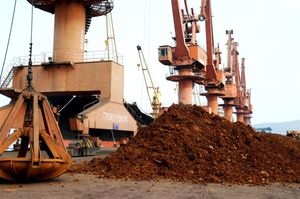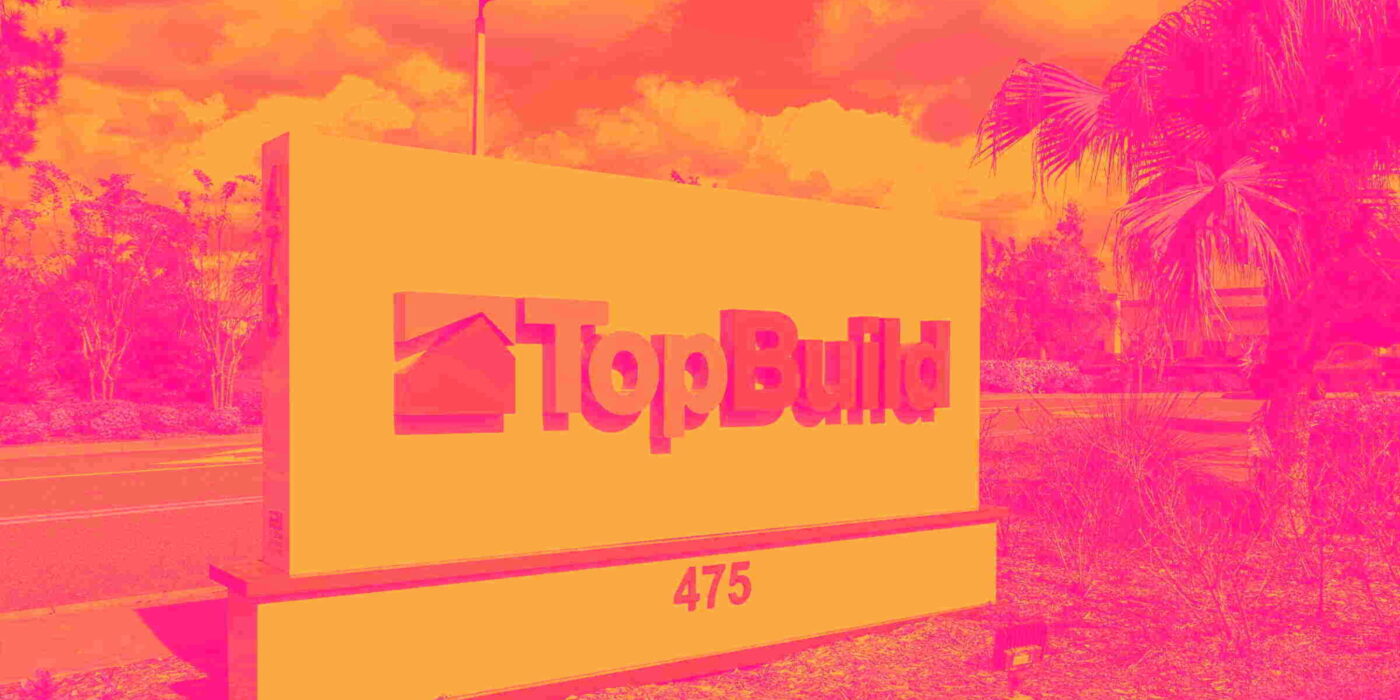
Building services and installation company TopBuild (NYSE: BLD) met Wall Street’s revenue expectations in Q1 CY2025, but sales fell by 3.6% year on year to $1.23 billion. The company’s outlook for the full year was close to analysts’ estimates with revenue guided to $5.2 billion at the midpoint. Its non-GAAP profit of $4.63 per share was 5.3% above analysts’ consensus estimates.
Is now the time to buy TopBuild? Find out by accessing our full research report, it’s free.
TopBuild (BLD) Q1 CY2025 Highlights:
- Revenue: $1.23 billion vs analyst estimates of $1.23 billion (3.6% year-on-year decline, in line)
- Adjusted EPS: $4.63 vs analyst estimates of $4.40 (5.3% beat)
- Adjusted EBITDA: $91.37 million vs analyst estimates of $227.7 million (7.4% margin, 59.9% miss)
- The company reconfirmed its revenue guidance for the full year of $5.2 billion at the midpoint
- EBITDA guidance for the full year is $1 billion at the midpoint, below analyst estimates of $1.01 billion
- Operating Margin: 14.4%, down from 16.8% in the same quarter last year
- Free Cash Flow Margin: 11.3%, down from 12.4% in the same quarter last year
- Market Capitalization: $8.54 billion
“Our first quarter results were in line with our expectations,” said Robert Buck, President and CEO of TopBuild.
Company Overview
Established in 2015 following a spinoff from Masco Corporation, TopBuild (NYSE: BLD) is a distributor and installer of insulation and other building products.
Sales Growth
A company’s long-term sales performance can indicate its overall quality. Any business can put up a good quarter or two, but many enduring ones grow for years. Thankfully, TopBuild’s 14.7% annualized revenue growth over the last five years was exceptional. Its growth beat the average industrials company and shows its offerings resonate with customers, a helpful starting point for our analysis.
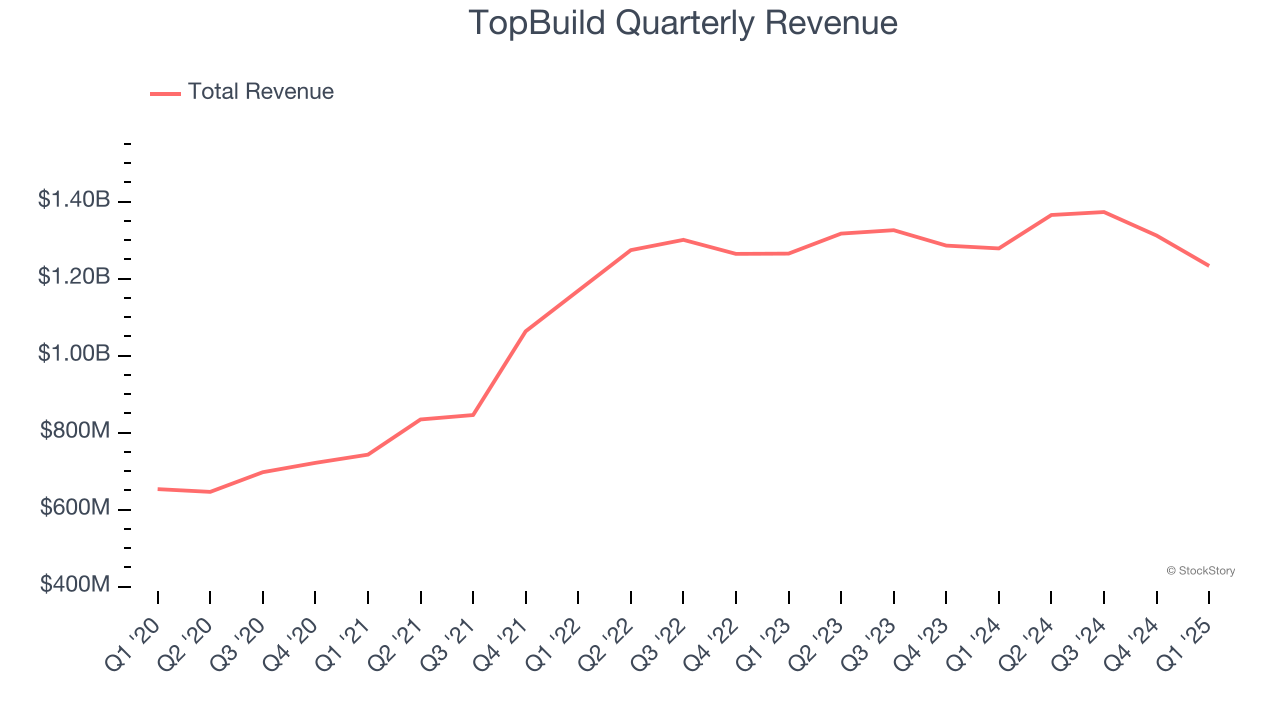
We at StockStory place the most emphasis on long-term growth, but within industrials, a half-decade historical view may miss cycles, industry trends, or a company capitalizing on catalysts such as a new contract win or a successful product line. TopBuild’s recent performance shows its demand has slowed significantly as its annualized revenue growth of 1.7% over the last two years was well below its five-year trend. 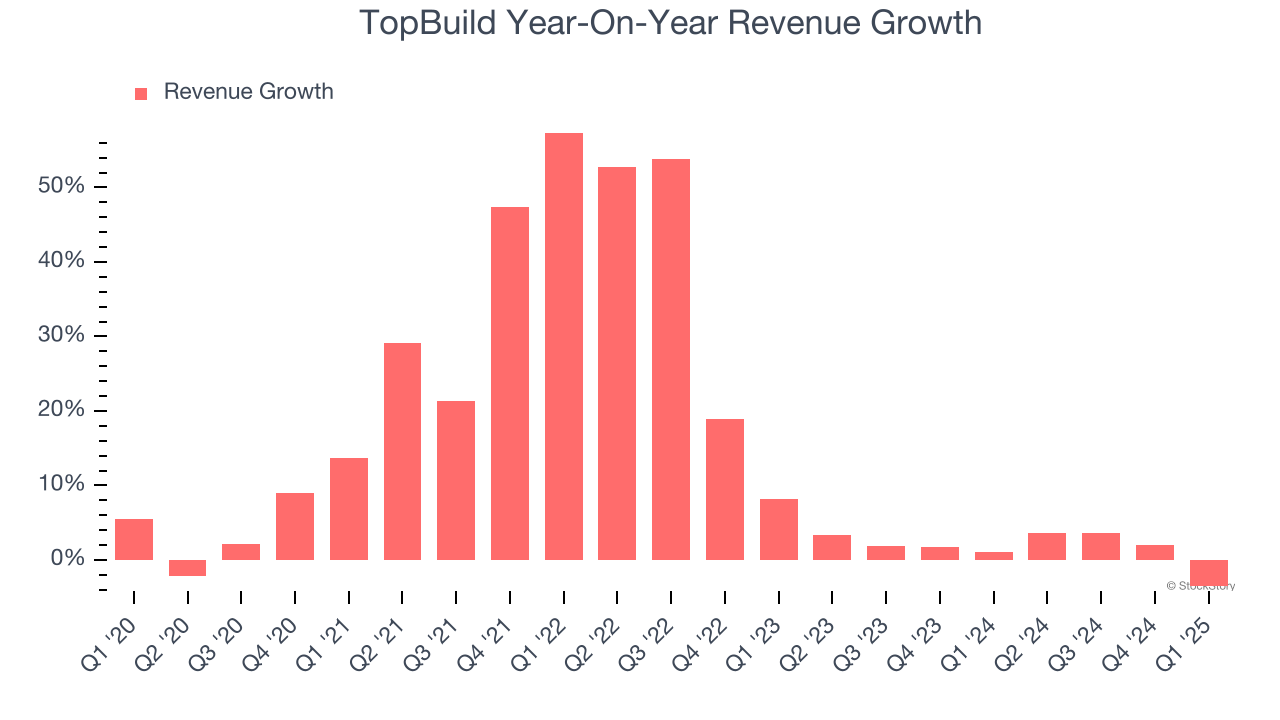
This quarter, TopBuild reported a rather uninspiring 3.6% year-on-year revenue decline to $1.23 billion of revenue, in line with Wall Street’s estimates.
Looking ahead, sell-side analysts expect revenue to decline by 2% over the next 12 months, a deceleration versus the last two years. This projection is underwhelming and suggests its products and services will see some demand headwinds. At least the company is tracking well in other measures of financial health.
Here at StockStory, we certainly understand the potential of thematic investing. Diverse winners from Microsoft (MSFT) to Alphabet (GOOG), Coca-Cola (KO) to Monster Beverage (MNST) could all have been identified as promising growth stories with a megatrend driving the growth. So, in that spirit, we’ve identified a relatively under-the-radar profitable growth stock benefiting from the rise of AI, available to you FREE via this link.
Operating Margin
TopBuild has been a well-oiled machine over the last five years. It demonstrated elite profitability for an industrials business, boasting an average operating margin of 15.7%. This result was particularly impressive because of its low gross margin, which is mostly a factor of what it sells and takes huge shifts to move meaningfully. Companies have more control over their operating margins, and it’s a show of well-managed operations if they’re high when gross margins are low.
Looking at the trend in its profitability, TopBuild’s operating margin rose by 2.5 percentage points over the last five years, as its sales growth gave it operating leverage.
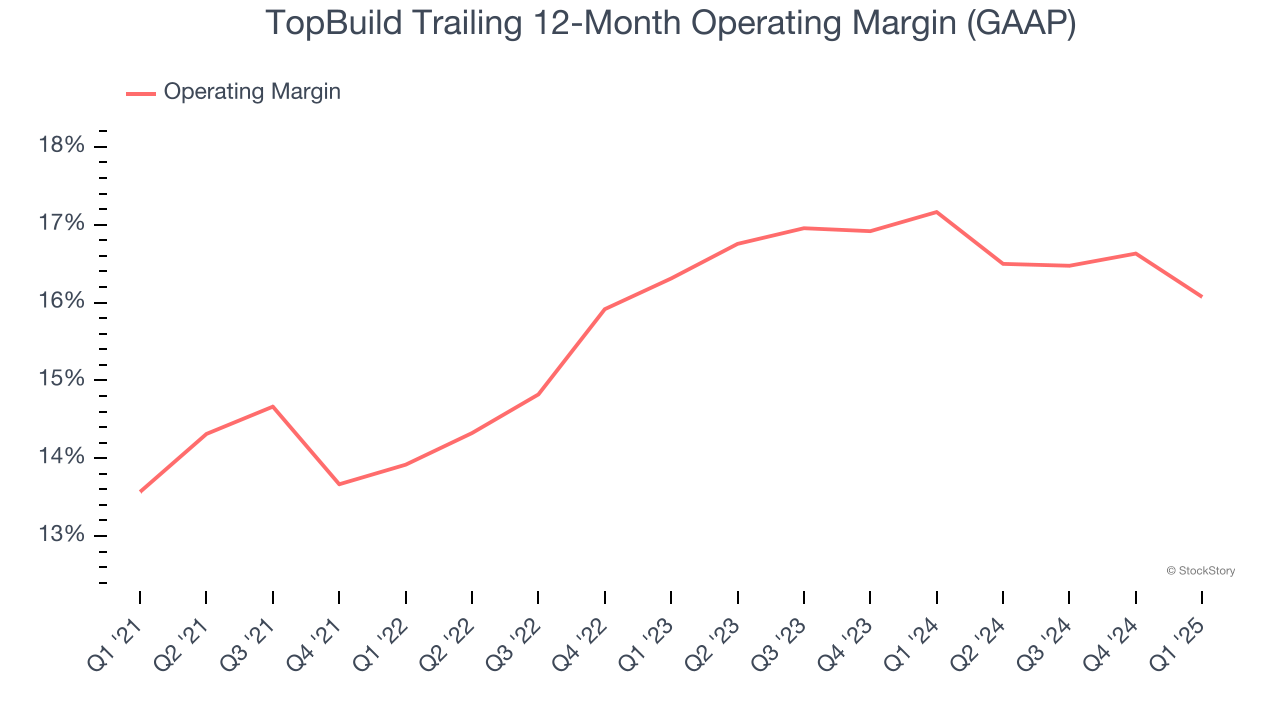
This quarter, TopBuild generated an operating profit margin of 14.4%, down 2.4 percentage points year on year. Since TopBuild’s operating margin decreased more than its gross margin, we can assume it was less efficient because expenses such as marketing, R&D, and administrative overhead increased.
Earnings Per Share
Revenue trends explain a company’s historical growth, but the long-term change in earnings per share (EPS) points to the profitability of that growth – for example, a company could inflate its sales through excessive spending on advertising and promotions.
TopBuild’s EPS grew at an astounding 29.1% compounded annual growth rate over the last five years, higher than its 14.7% annualized revenue growth. This tells us the company became more profitable on a per-share basis as it expanded.
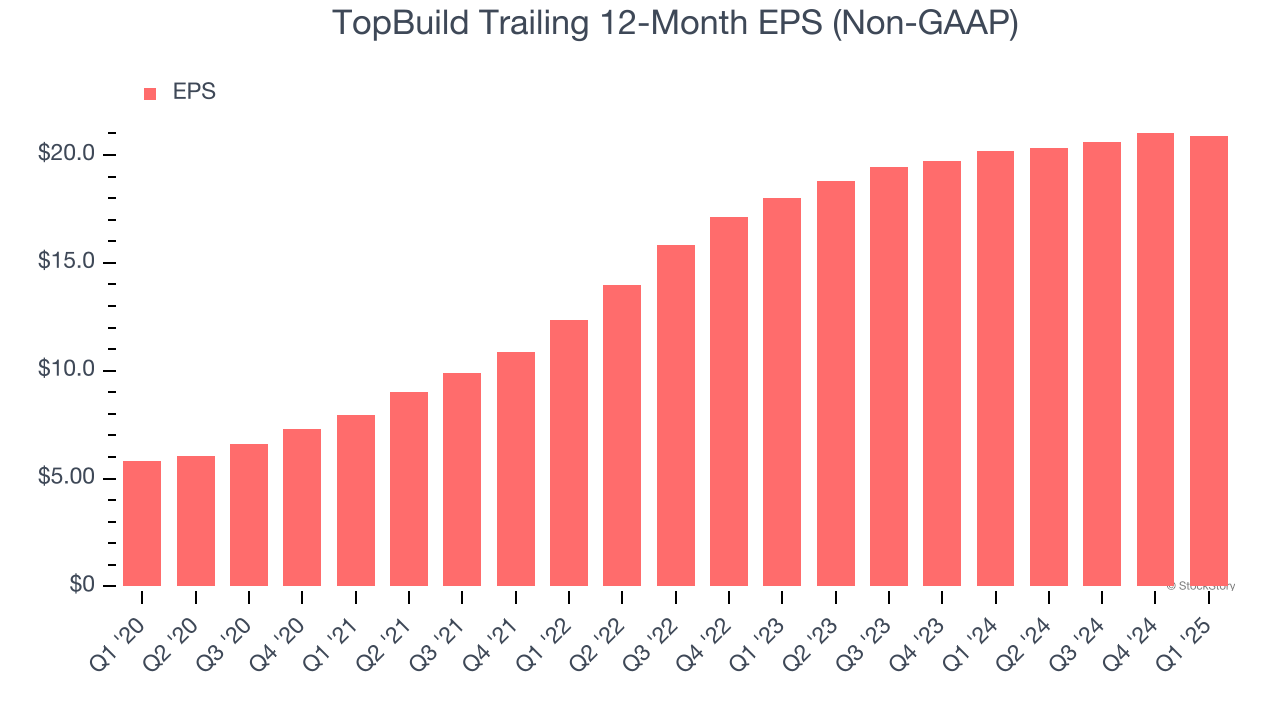
We can take a deeper look into TopBuild’s earnings quality to better understand the drivers of its performance. As we mentioned earlier, TopBuild’s operating margin declined this quarter but expanded by 2.5 percentage points over the last five years. Its share count also shrank by 13.2%, and these factors together are positive signs for shareholders because improving profitability and share buybacks turbocharge EPS growth relative to revenue growth. 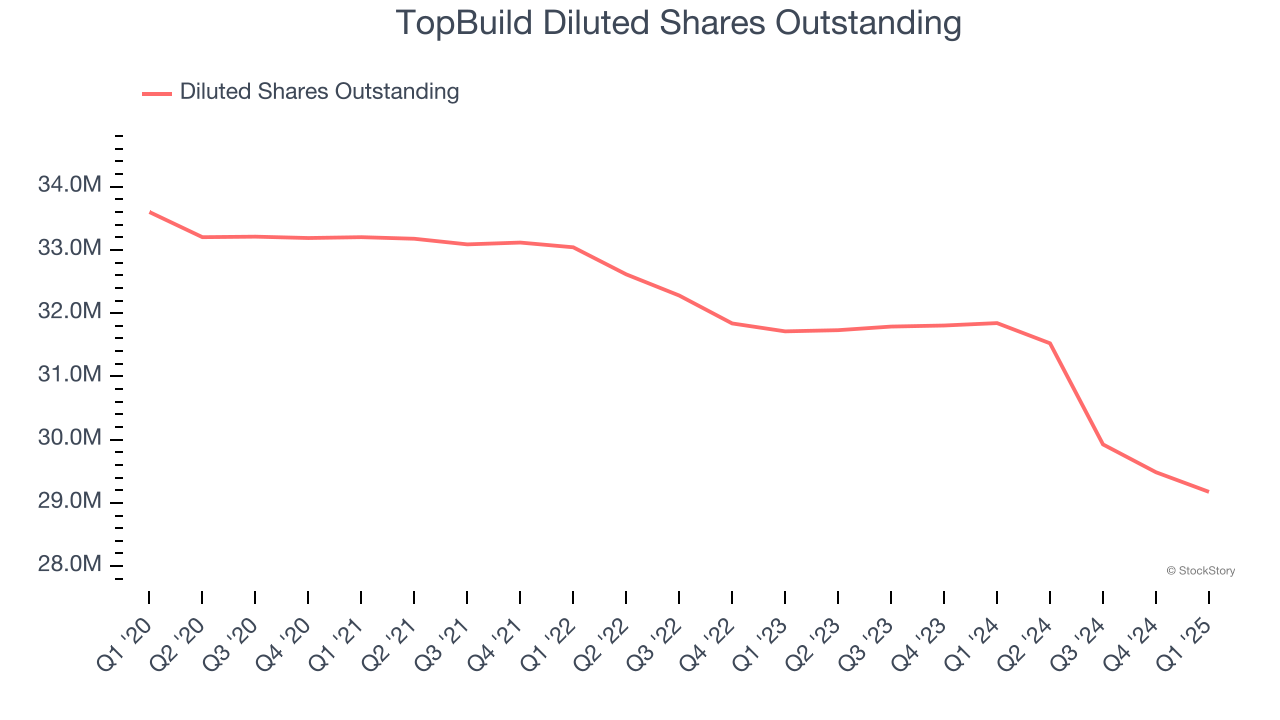
Like with revenue, we analyze EPS over a more recent period because it can provide insight into an emerging theme or development for the business.
For TopBuild, its two-year annual EPS growth of 7.7% was lower than its five-year trend. This wasn’t great, but at least the company was successful in other measures of financial health.
In Q1, TopBuild reported EPS at $4.63, down from $4.81 in the same quarter last year. Despite falling year on year, this print beat analysts’ estimates by 5.3%. Over the next 12 months, Wall Street expects TopBuild’s full-year EPS of $20.86 to shrink by 1.2%.
Key Takeaways from TopBuild’s Q1 Results
It was encouraging to see TopBuild beat analysts’ EPS expectations this quarter. We were also happy its revenue was in line with Wall Street’s estimates. On the other hand, its EBITDA missed significantly and its full-year EBITDA guidance fell slightly short of Wall Street’s estimates. Overall, this was a mixed quarter. The stock remained flat at $293.89 immediately after reporting.
So should you invest in TopBuild right now? We think that the latest quarter is only one piece of the longer-term business quality puzzle. Quality, when combined with valuation, can help determine if the stock is a buy. We cover that in our actionable full research report which you can read here, it’s free.



